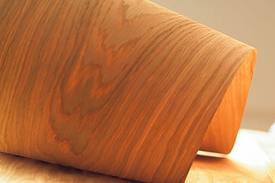naturally:wood, a resource of British Columbia’s Forestry Innovation Investment, has released “A Natural Choice: How Wood Contributes to Sustainability’s Triple Bottom Line,” the third CEU course in a three-part series dedicated to examining and comparing the environmental footprint of wood, concrete and steel. Together, the three courses offer architects and specifiers an overview of each material’s performance attributes and explore how wood fits into the overall design of a sustainably built structure.
The three courses comprise:
Designing sustainable buildings requires an understanding of the environmental footprint of each material in the structure. Using research and facts, “Materials Matter” examines the differences between three common building materials—wood, steel and concrete—in terms of their environmental footprint at several stages of the life-cycle process, including raw resource extraction, manufacturing and transportation. Responsible procurement, sustainability and community issues also are discussed.
The second course delves even deeper by exploring how wood, concrete and steel have an environmental impact on building construction, operation and end of life. This article explains the differences between these three materials in terms of basic characteristics and material properties, performance during the building operations phase, and sustainability factors including carbon footprint and material reuse.
By examining how wood contributes to a project’s environmental bottom line, the final course in the series provides a broader view of the meaning of sustainability, while offering specific examples of rating systems and defining green design. BD+C
Related Stories
Sustainability | May 10, 2024
Perkins&Will’s first ESG report discloses operational performance data across key metrics
Perkins&Will recently released its first ESG report that discloses the firm’s operational performance data across key metrics and assesses its strengths and opportunities.
MFPRO+ News | May 10, 2024
HUD strengthens flood protection rules for new and rebuilt residential buildings
The U.S. Department of Housing and Urban Development (HUD) issued more stringent flood protection requirements for new and rebuilt homes that are developed with, or financed with, federal funds. The rule strengthens standards by increasing elevations and flood-proofing requirements of new properties in areas at risk of flooding.
Government Buildings | May 10, 2024
New federal buildings must be all-electric by 2030
A new Biden Administration rule bans the use of fossil fuels in new federal buildings beginning in 2030. The announcement came despite longstanding opposition to the rule by the natural gas industry.
Sustainable Development | May 10, 2024
Nature as the city: Why it’s time for a new framework to guide development
NBBJ leaders Jonathan Ward and Margaret Montgomery explore five inspirational ideas they are actively integrating into projects to ensure more healthy, natural cities.
Mass Timber | May 8, 2024
Portland's Timberview VIII mass timber multifamily development will offer more than 100 affordable units
An eight-story, 72,000-sf mass timber apartment building in Portland, Ore., topped out this winter and will soon offer over 100 affordable units. The structure is the tallest affordable housing mass timber building and the first Type IV-C affordable housing building in the city.
Architects | May 8, 2024
Ivan O’Garro, AIA joins LEO A DALY as a vice president
Integrated design firm LEO A DALY welcomes Ivan O’Garro, AIA, as a vice president and managing principal of its Atlanta studio.
K-12 Schools | May 7, 2024
World's first K-12 school to achieve both LEED for Schools Platinum and WELL Platinum
A new K-12 school in Washington, D.C., is the first school in the world to achieve both LEED for Schools Platinum and WELL Platinum, according to its architect, Perkins Eastman. The John Lewis Elementary School is also the first school in the District of Columbia designed to achieve net-zero energy (NZE).
Healthcare Facilities | May 6, 2024
Hospital construction costs for 2024
Data from Gordian breaks down the average cost per square foot for a three-story hospital across 10 U.S. cities.
Biophilic Design | May 6, 2024
The benefits of biophilic design in the built environment
Biophilic design in the built environment supports the health and wellbeing of individuals, as they spend most of their time indoors.
MFPRO+ Special Reports | May 6, 2024
Top 10 trends in affordable housing
Among affordable housing developers today, there’s one commonality tying projects together: uncertainty. AEC firms share their latest insights and philosophies on the future of affordable housing in BD+C's 2023 Multifamily Annual Report.

















